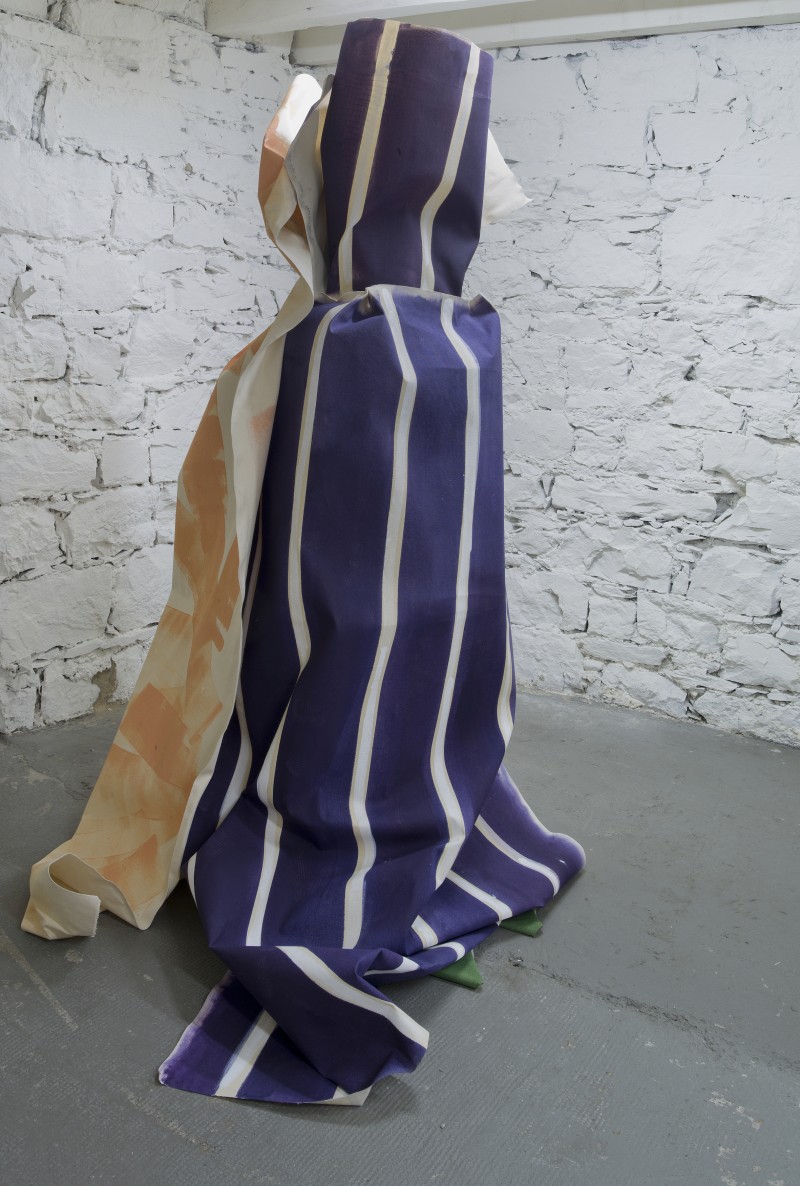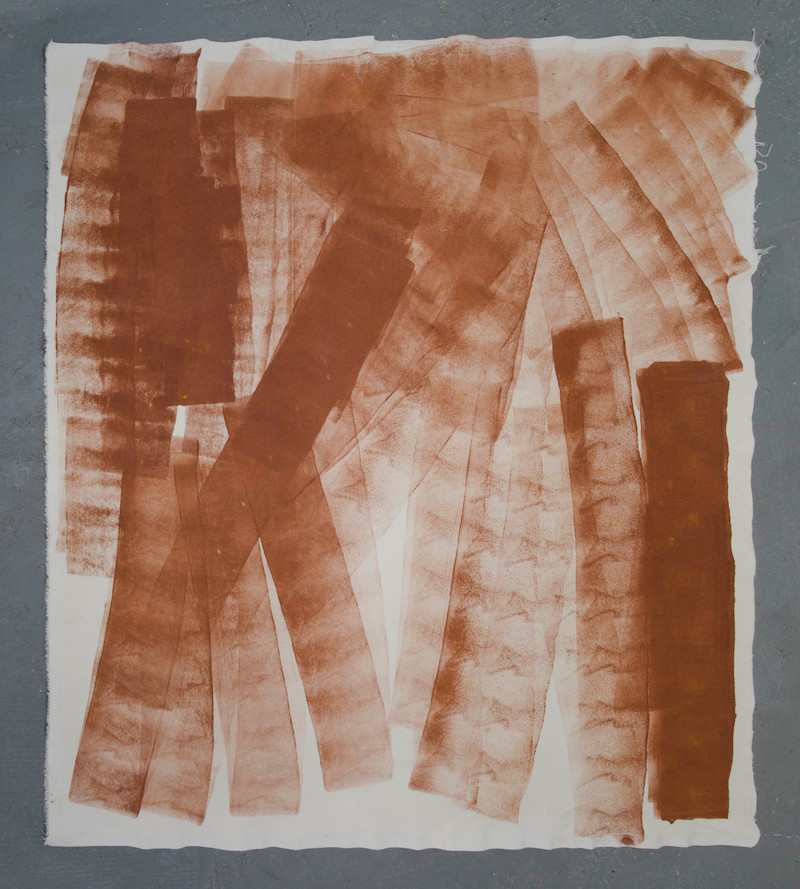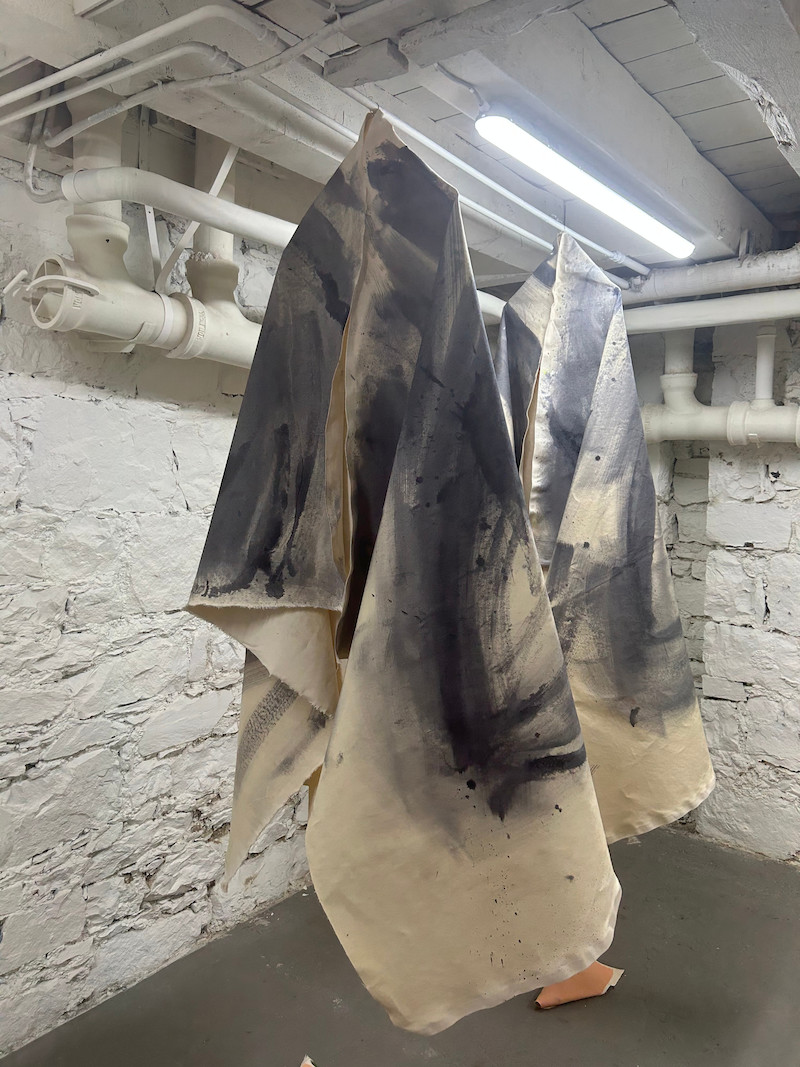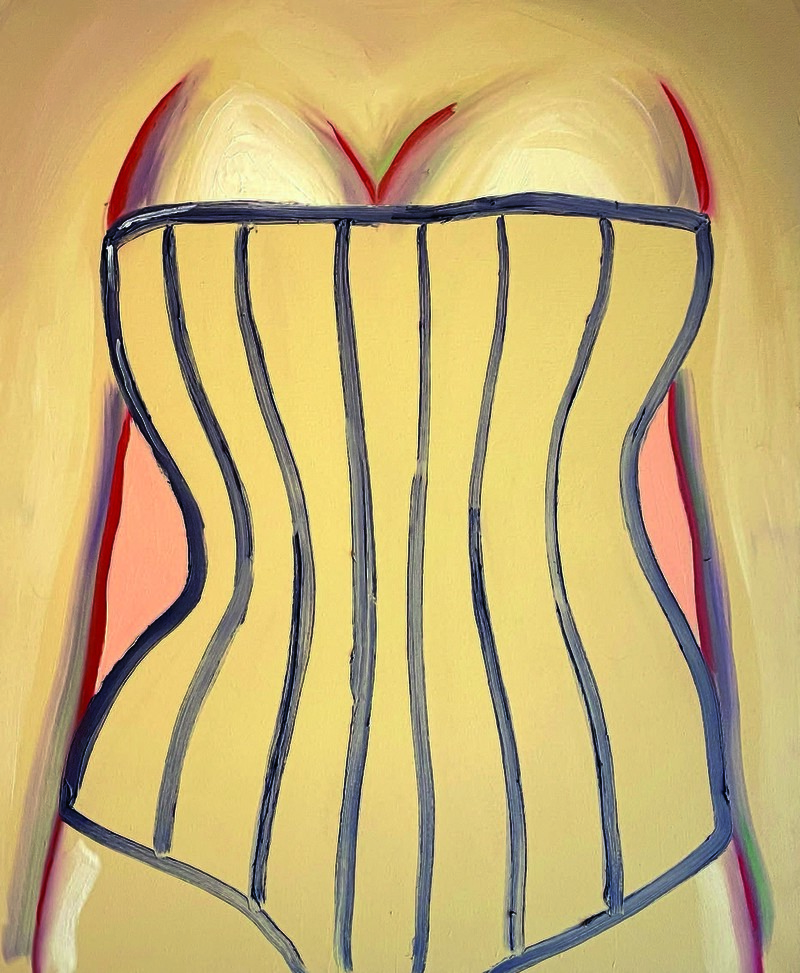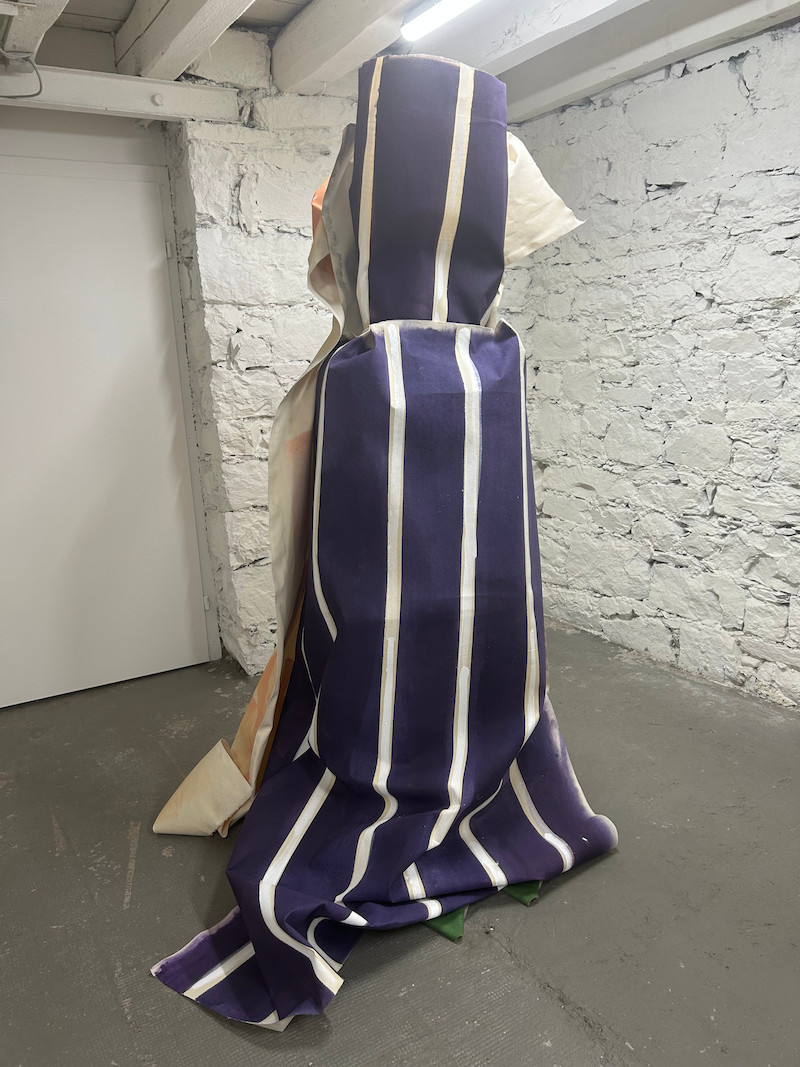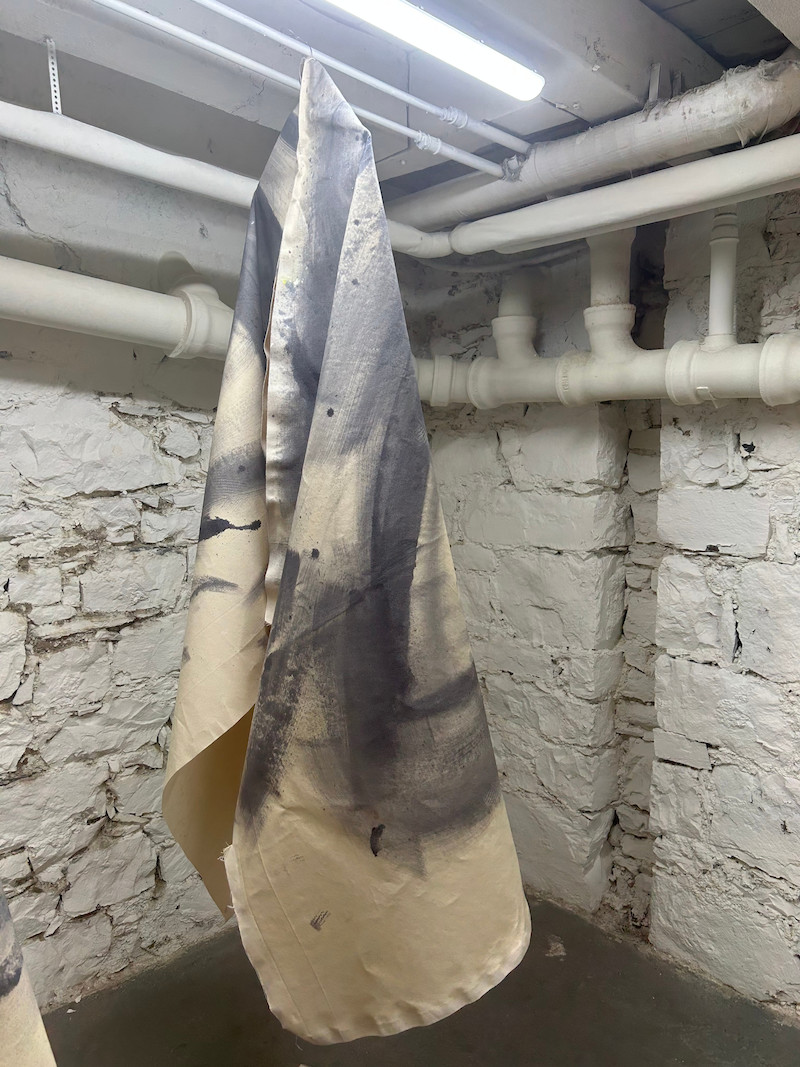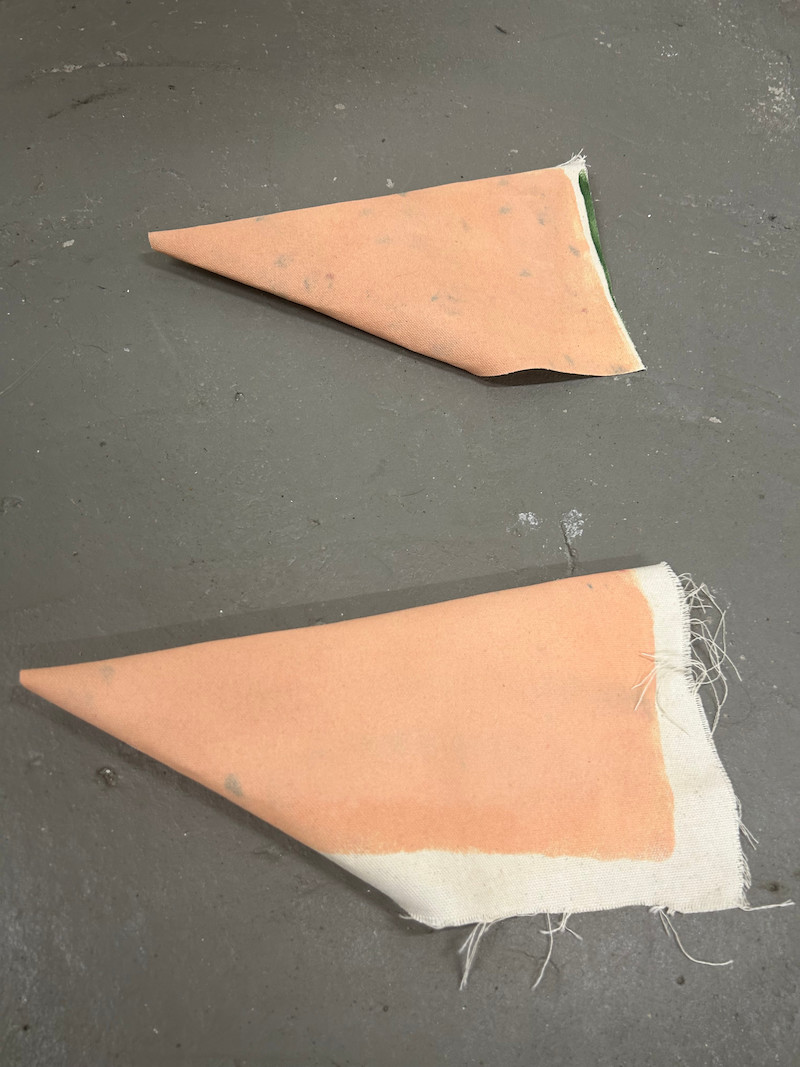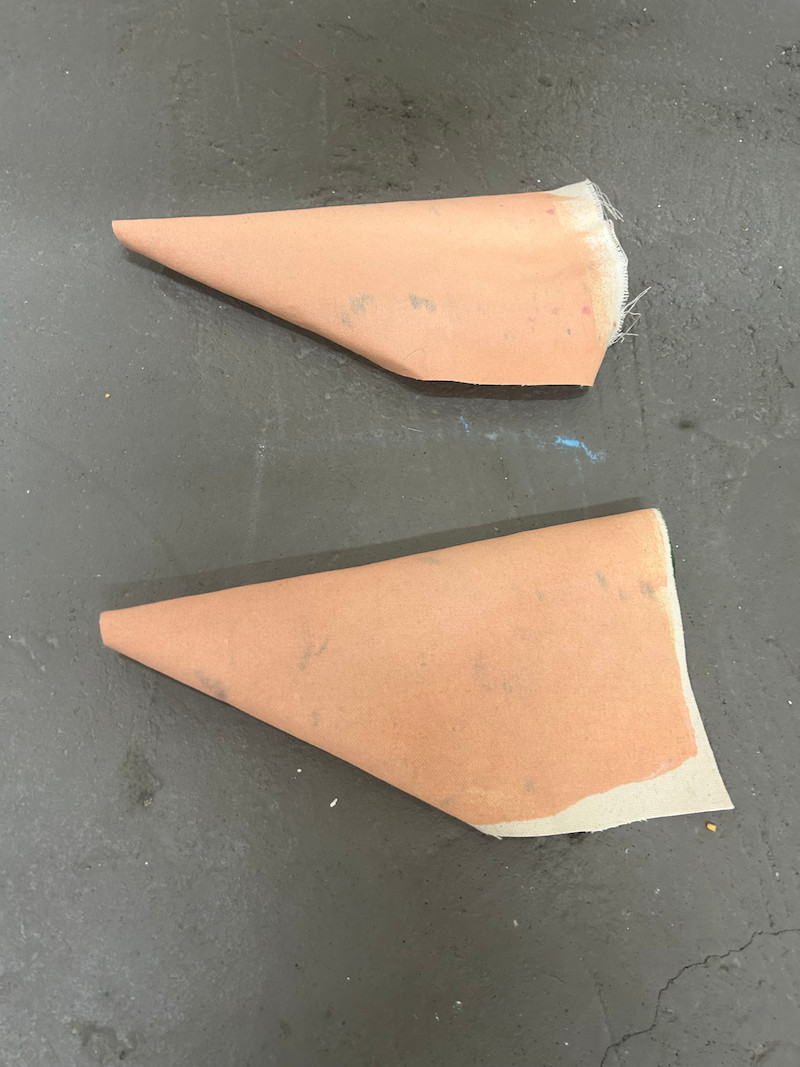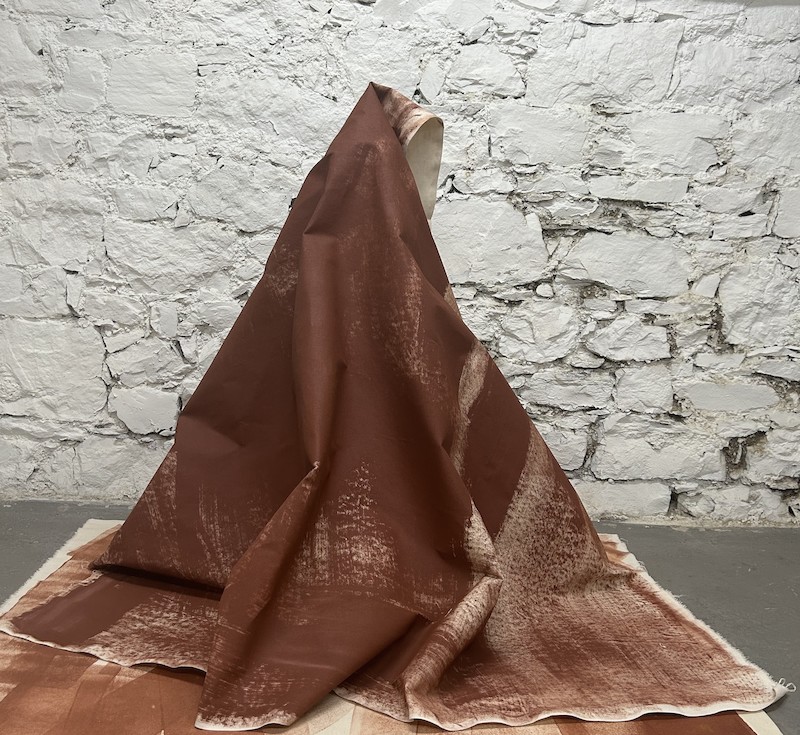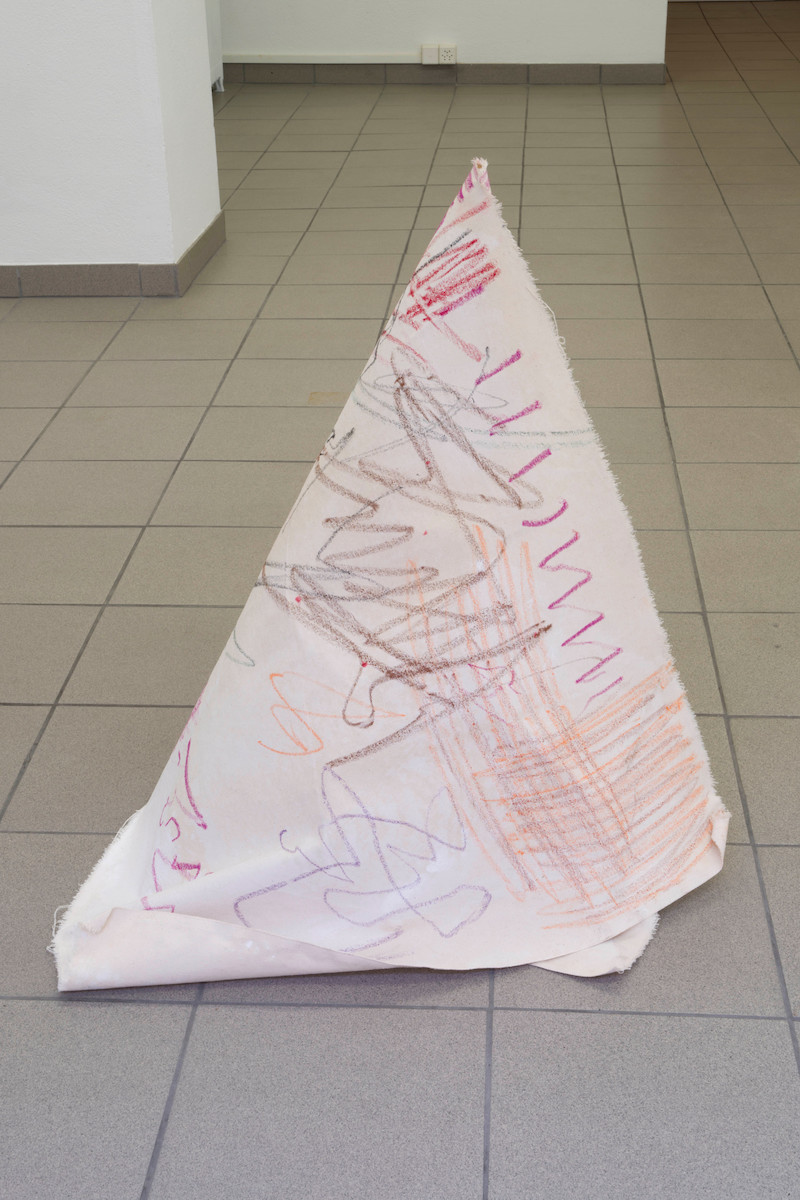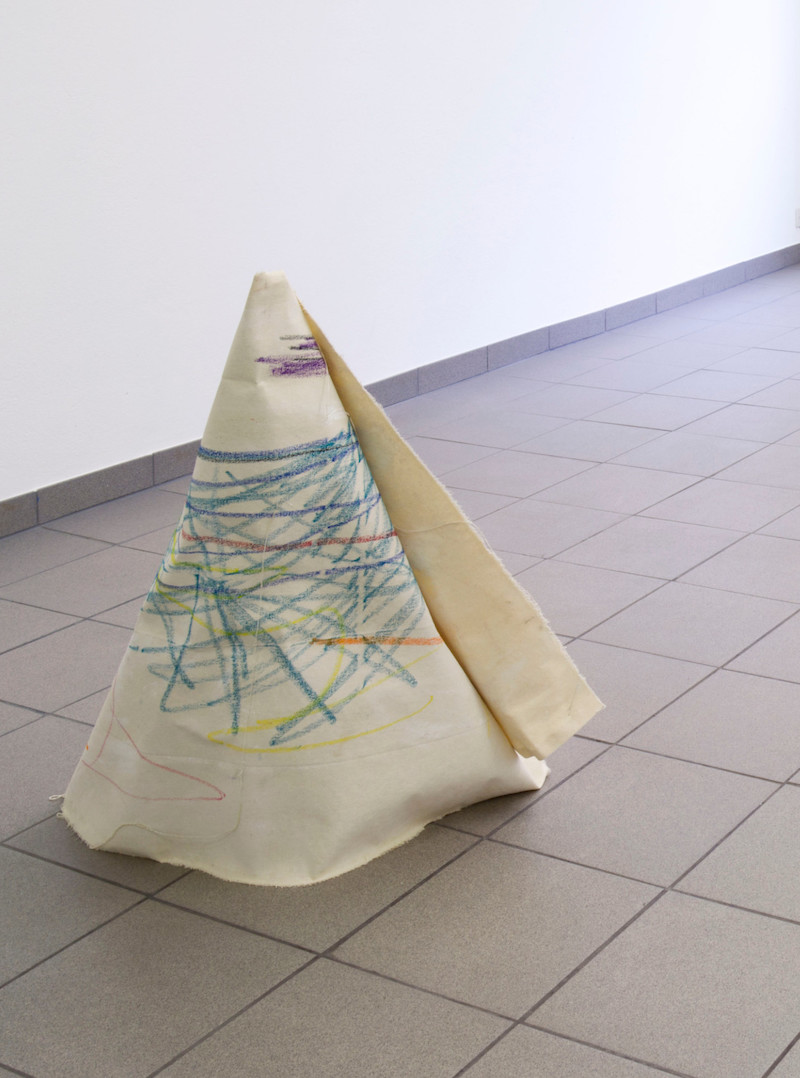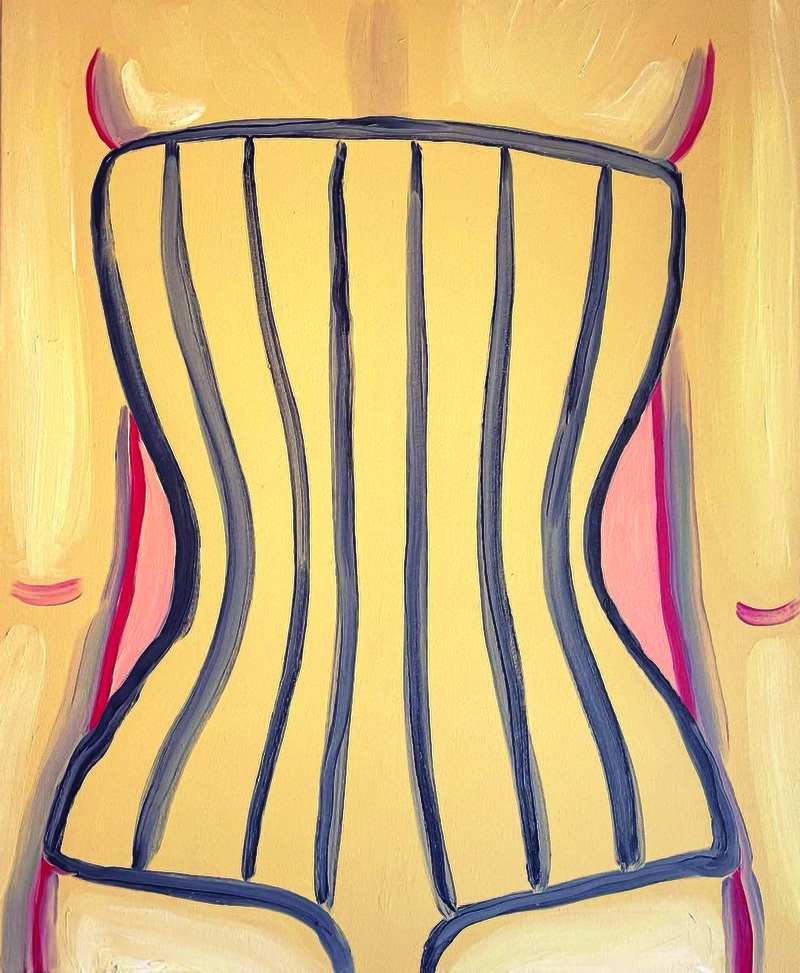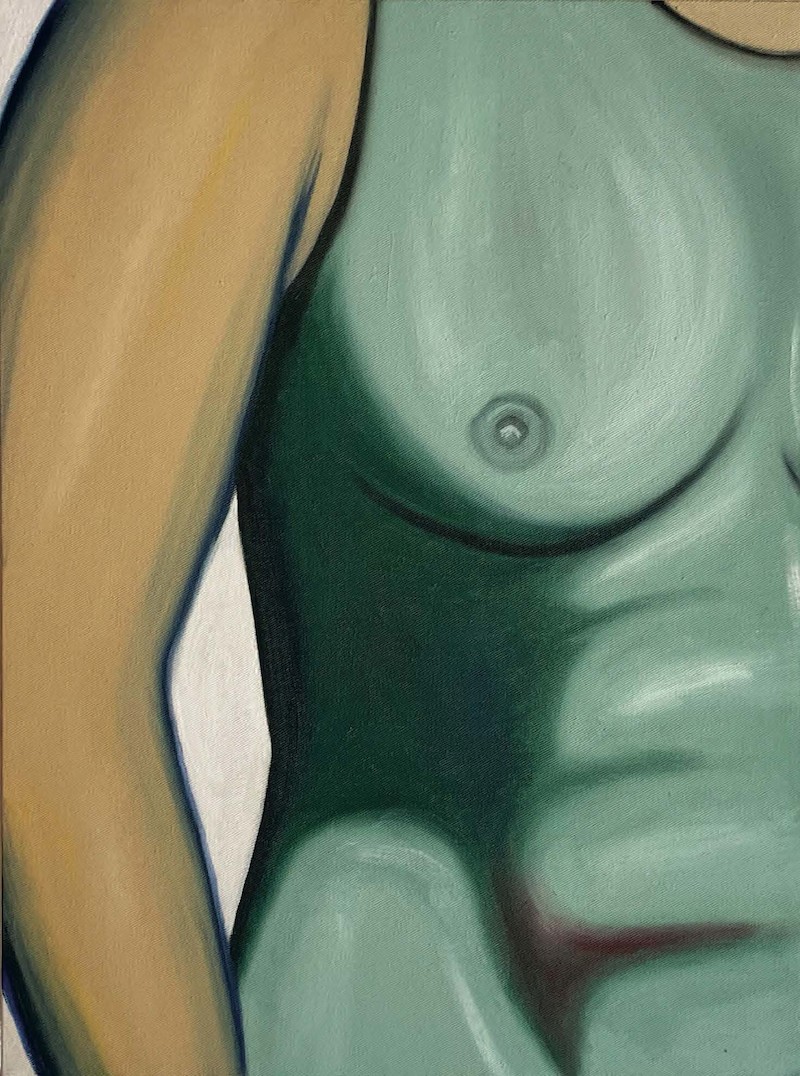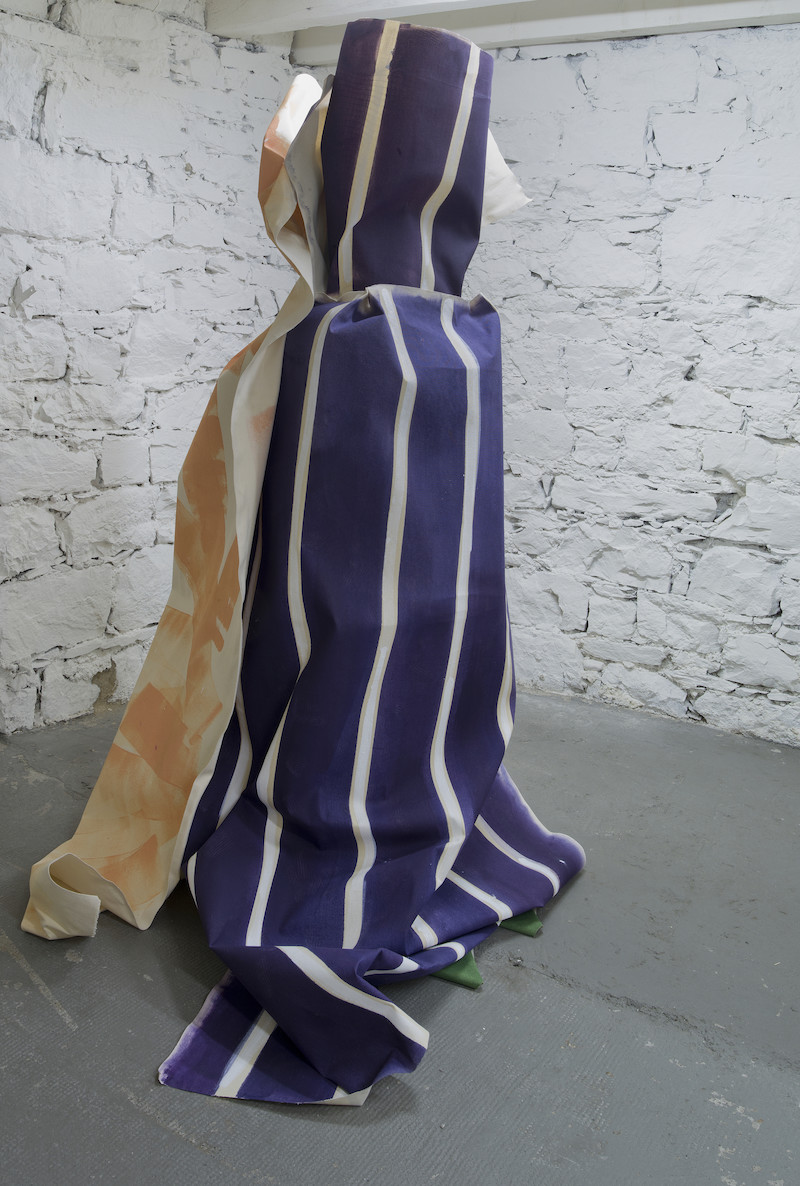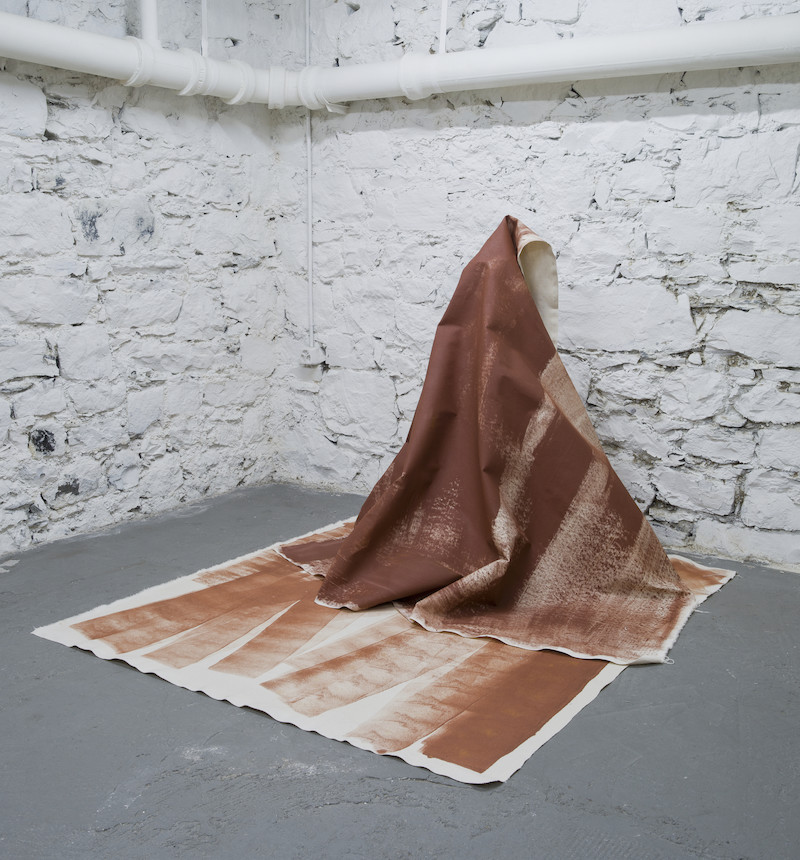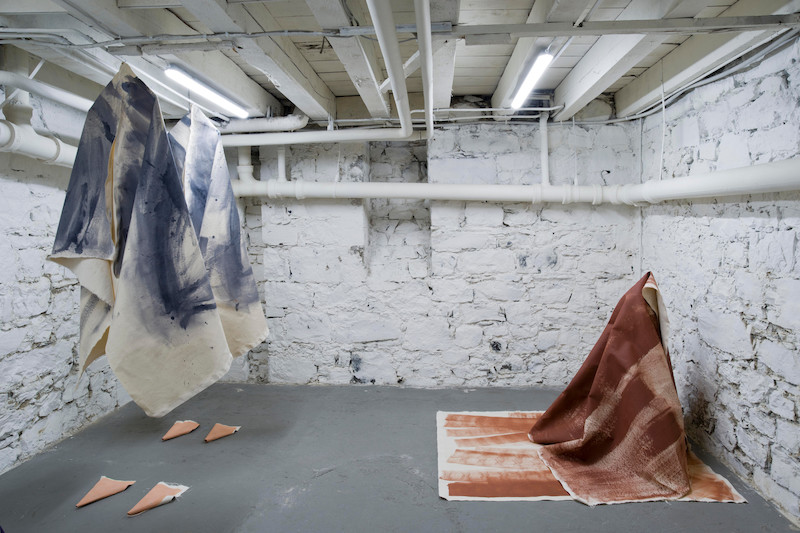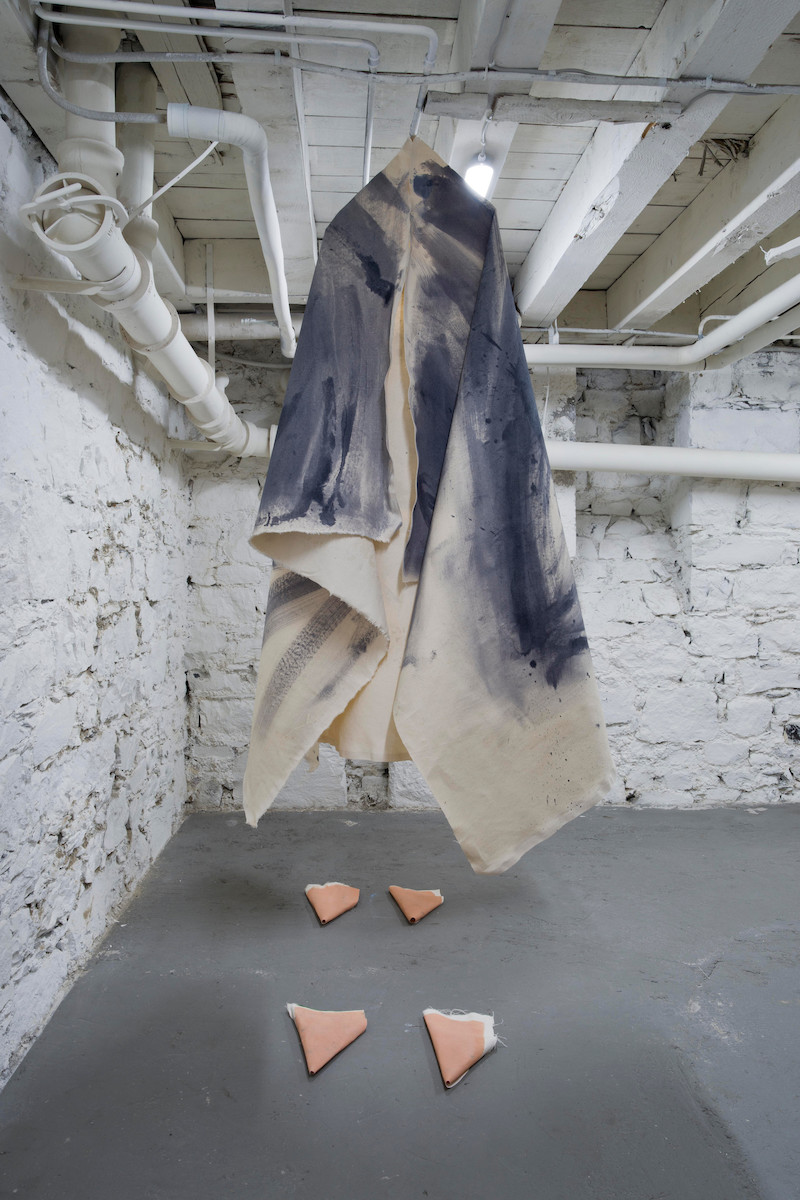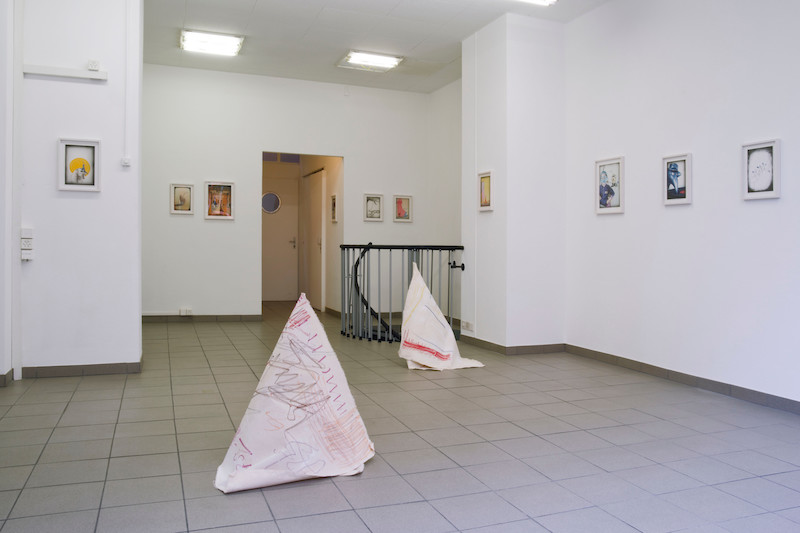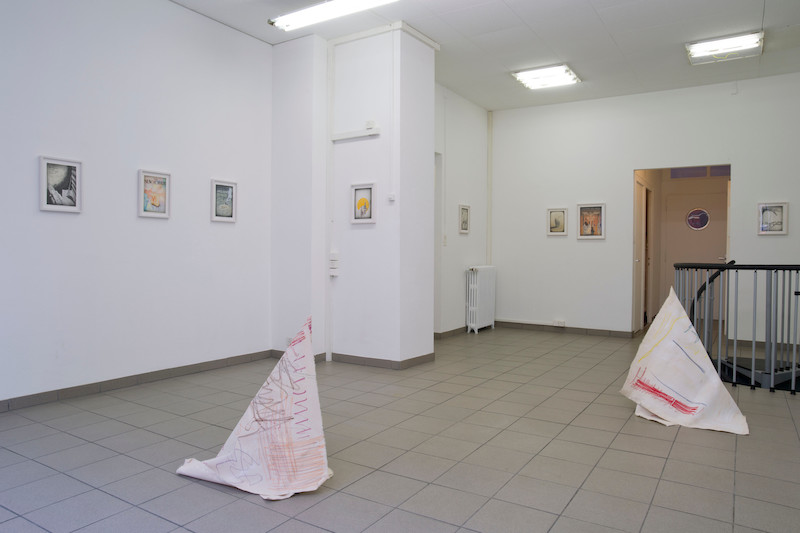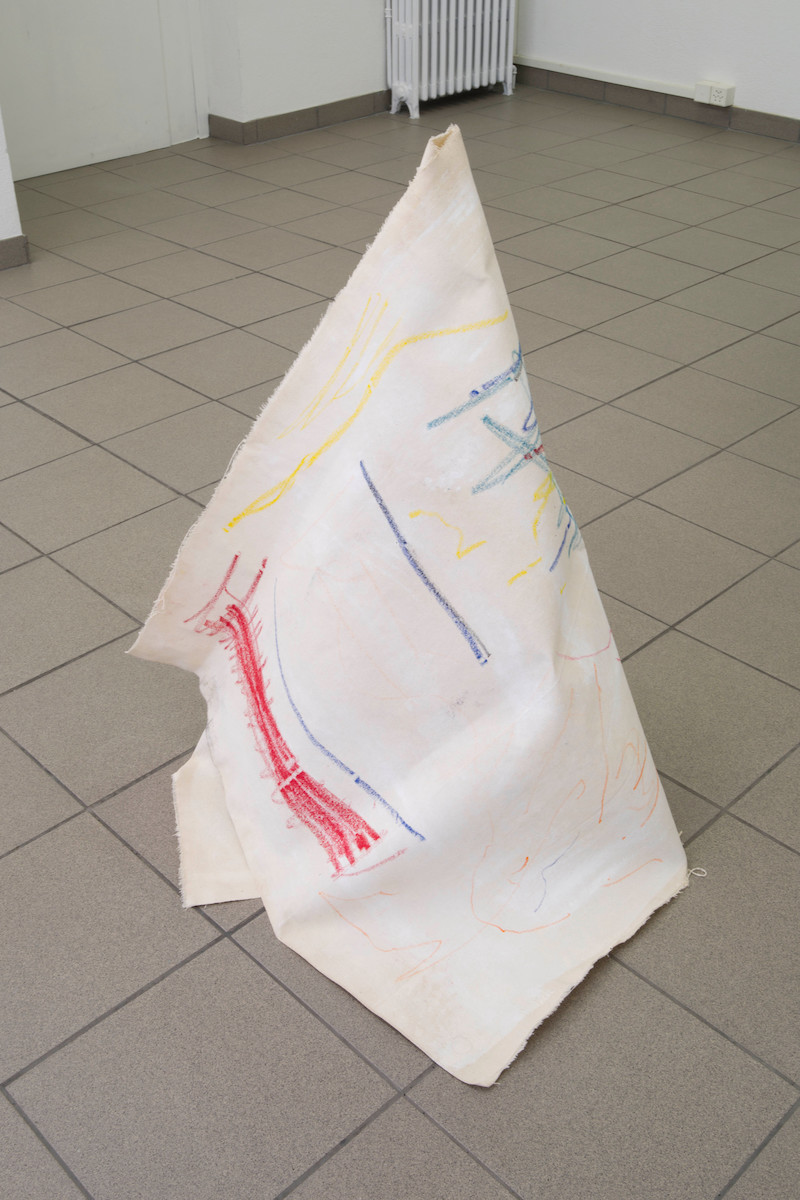Ferizi’s practice centers around the condition of the human body in a social context, cultural heritage and personal agency. The fictional narratives portrayed are driven by existing stereotypical characters and events. Earlier works have frequently depicted the female nude in situations of utter control, be it domination or purposeful restraint. The artist established this powerplay through a consistant color palette combined with a gladiatorial occupancy of the body within the frame.
The title of the show refers to Ferizi’s changlings and also to her research which is directly inspired by fashion creation. In 1967, the designer Harry Gordon created the “Poster Dress”. These were simple shifts made of treated paper, screen-printed with pop culture themes, and fastened by velcro. They were meant to be worn for a little while and later pinned to the wall, as a poster. Thoughts on the conservative views that dictate fashion versus art, and the cyclical nature of trends that can be just as easily be applied to “fine” arts, have led to the “Poster Dress Paintings” (I & II), and to a new flesh.
Through experiments with her source material, her painting has morphed from figures on the canvas to the total creation of a shape, a new imposing body.
Elaborating on her exploration of archetypes, the new skin also encourages a fresh tonal expression, based on color-coded standards. The towering “Stripe Lady” evokes all the symbolism of bright royal purple, with wide vertical stripes associated with Victorian affluence or mourning. The “Swiss Monk” comes with its own set of values defined by discreet tones. These three dimensional “shell” paintings are hollow figurines filled with intrigue, bursting with interrogations on what are our undeniable (albeit changing) preconceptions, or what can be a purely aesthetic choice.
The exhibition features three canvases in which the literal and metaphorical sense of body armour are represented. A front and back diptych of a striped corset, extra-long (referring to the model which was an anti-onanism tool), fitted to a faceless and curvaceous form; and one shielded female torso, inspired by the lightweight greek bronze Ciurass (4th century B.C.) and its chiselled attributes, nipples included. These works mark the transition to her garment paintings on the border of sculpture.
